
Cape Hatteras in winter
January 21st, 2012
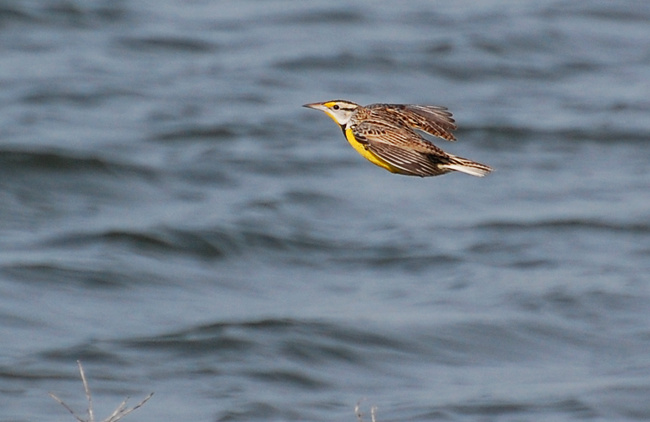
In winter, when most of the bright yellow birds have flown to the tropics, and goldfinches have molted most of their yellow for dingy greyish-green, what a sight to see a meadowlark, as golden-breasted as ever! These birds, generally thought of as a rural species, occur year-round at Pea Island Wildlife Refuge. In summer I hear them singing from the boardwalk.
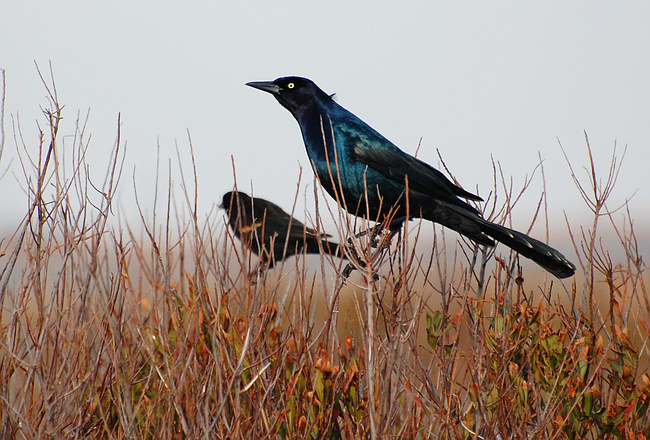
1680x1050 wallpaper
The Boat-Tailed Grackle, a supersize relative of the Common Grackle, is one of the characteristic birds of the south Atlantic coast. In winter they get very flocky, gathering on lawns, rooftops, sand dunes, and last but not least, feeders. A large group was patronizing the feeders at the Visitor Center, though they flushed into the vegetation as soon as I drew near.
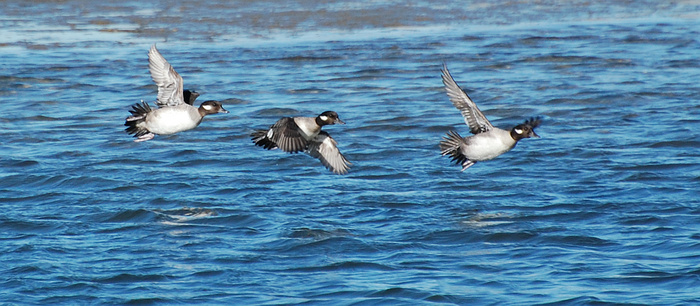
The dominant wintering duck at Pea Island appears to be the Northern Pintail---they raft by the hundreds on open water. They're skittish when approached, though, so I wasn't able to get any good pictures of them. These female Buffleheads were somewhat more cooperative.
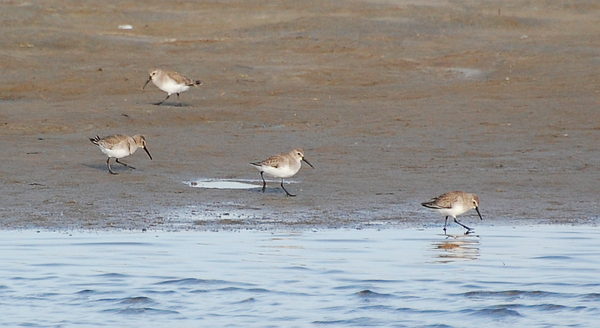
I was handicapped in my attempts to view and photograph waterfowl by the damage from Hurricane Irene. It broke the dam and all but emptied out North Pond, which is encircled by a public trail and normally teeming with ducks, geese and swans in winter. Reduced to mud flats and puddles, it wasn't very attractive to waterfowl anymore. It was just the right habitat for sandpipers though---particularly these Dunlins.
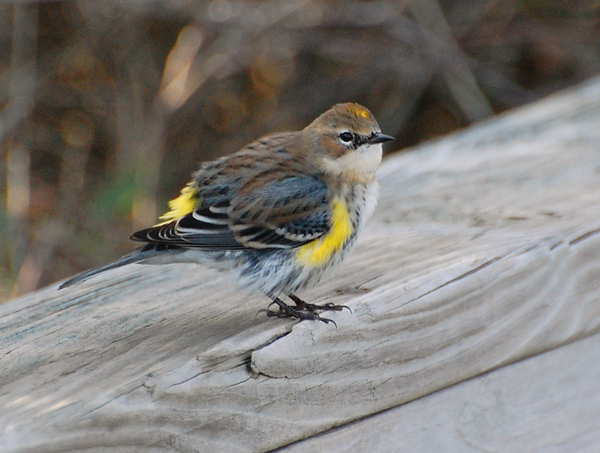
Temperatures in excess of 15 degrees drew out flying insects---much to the delight of Pea Island's abundant wintering Yellow-Rumped Warblers. Unlike most warblers, Yellow-Rumpeds can survive on berries for long stretches (particularly wax myrtle berries, which they are specially evolved to digest), which is why they can winter well north of the tropics. But an influx of protein still makes their day. As my mother and I went down the boardwalk they were flycatching in the air all around us, sometimes perching on the railing for their next sally.
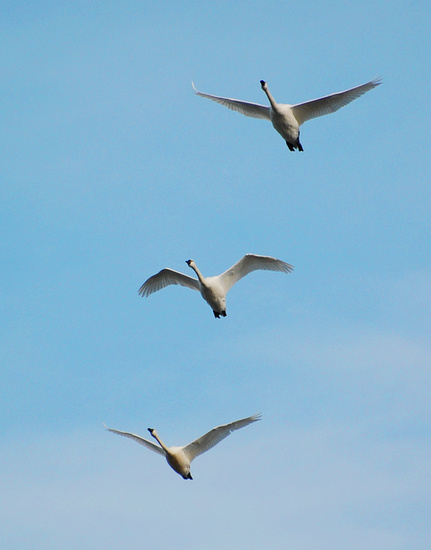
A trio of Tundra Swans. Outer Banks is an important wintering ground for this species, which breeds in the far north of North America and Eurasia.
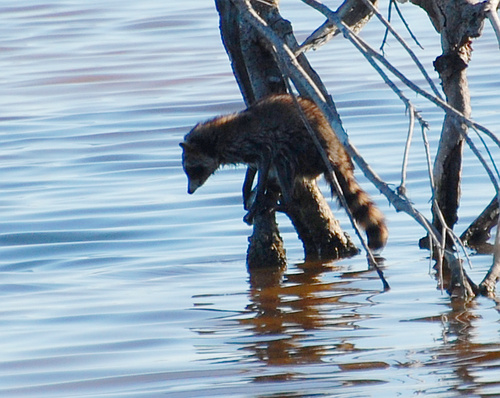
I almost passed this up at first, mistaking the distant raccoon for part of the oddly-shaped bundle of sticks.
January 21st, 2012

In winter, when most of the bright yellow birds have flown to the tropics, and goldfinches have molted most of their yellow for dingy greyish-green, what a sight to see a meadowlark, as golden-breasted as ever! These birds, generally thought of as a rural species, occur year-round at Pea Island Wildlife Refuge. In summer I hear them singing from the boardwalk.

1680x1050 wallpaper
The Boat-Tailed Grackle, a supersize relative of the Common Grackle, is one of the characteristic birds of the south Atlantic coast. In winter they get very flocky, gathering on lawns, rooftops, sand dunes, and last but not least, feeders. A large group was patronizing the feeders at the Visitor Center, though they flushed into the vegetation as soon as I drew near.

The dominant wintering duck at Pea Island appears to be the Northern Pintail---they raft by the hundreds on open water. They're skittish when approached, though, so I wasn't able to get any good pictures of them. These female Buffleheads were somewhat more cooperative.

I was handicapped in my attempts to view and photograph waterfowl by the damage from Hurricane Irene. It broke the dam and all but emptied out North Pond, which is encircled by a public trail and normally teeming with ducks, geese and swans in winter. Reduced to mud flats and puddles, it wasn't very attractive to waterfowl anymore. It was just the right habitat for sandpipers though---particularly these Dunlins.

Temperatures in excess of 15 degrees drew out flying insects---much to the delight of Pea Island's abundant wintering Yellow-Rumped Warblers. Unlike most warblers, Yellow-Rumpeds can survive on berries for long stretches (particularly wax myrtle berries, which they are specially evolved to digest), which is why they can winter well north of the tropics. But an influx of protein still makes their day. As my mother and I went down the boardwalk they were flycatching in the air all around us, sometimes perching on the railing for their next sally.

A trio of Tundra Swans. Outer Banks is an important wintering ground for this species, which breeds in the far north of North America and Eurasia.

I almost passed this up at first, mistaking the distant raccoon for part of the oddly-shaped bundle of sticks.
| ← | → |
